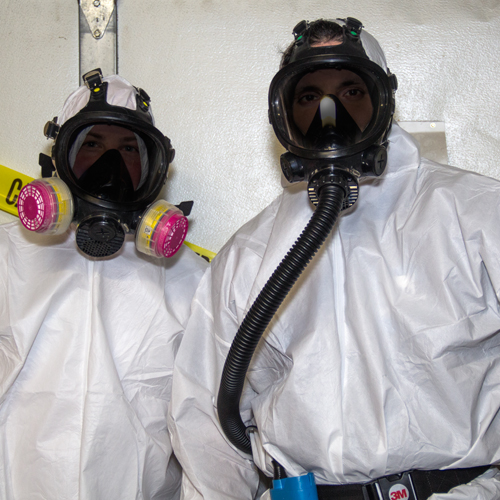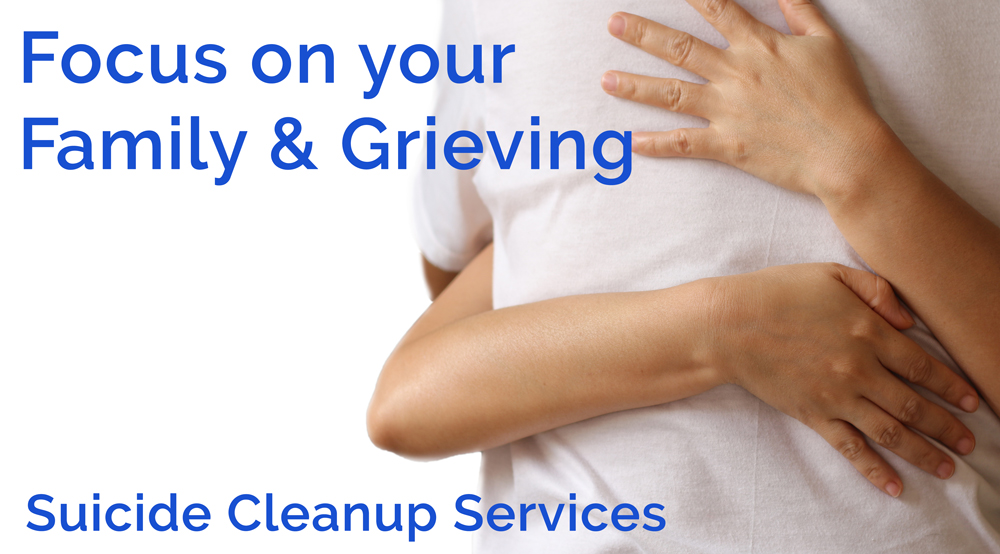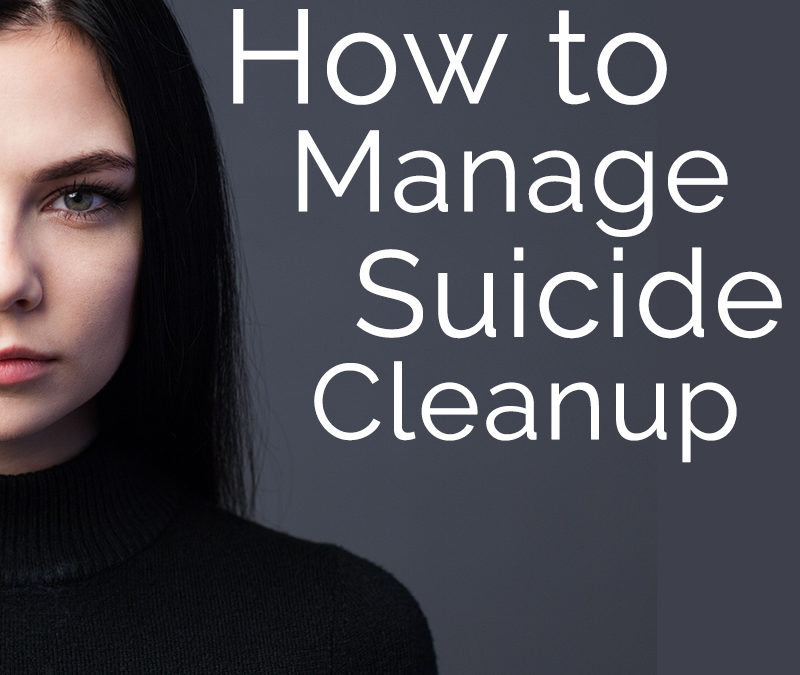
4 Things to Do If You Need Emergency Crime Scene Cleanup
March 28, 2017
Focus on your Family & Grieving: Suicide Cleaning Services
March 28, 2019 The unexpected and often traumatizing loss of a loved one to suicide is difficult enough. Unfortunately, if the event occurred on private property, it’s up to the property owners, deceased’s estate, or immediate family to either bring in death cleanup professionals or prepare themselves to complete the job themselves.
The unexpected and often traumatizing loss of a loved one to suicide is difficult enough. Unfortunately, if the event occurred on private property, it’s up to the property owners, deceased’s estate, or immediate family to either bring in death cleanup professionals or prepare themselves to complete the job themselves.
During extremely stressful times, it’s important to clearly understand the scope of cleaning up after a suicide, be prepared to gather all the right materials to safely clean and sanitize the property, and have a plan to manage the process without compromising self-care.
The cleaning process should begin as soon as the deceased is removed from the property and any associated investigations are complete. Decomposition of biological material occurs rapidly, generating unpleasant and pervasive odors and allowing blood and fluid to permeate surfaces.
If you aren’t sure whether you should hire a professional or “go it alone”, consider these necessary steps to quickly, safely, and effectively restore the scene of a suicide to its pre-trauma condition:
Ask your insurance agency about death cleanup coverage
From the insurance adjuster’s standpoint, trauma and death scene cleanup is a type of emergency repair, and professional biohazard cleanup is likely covered by your homeowner’s or renter’s policy. If you plan to clean up the death scene yourself, be sure to ask what documents and receipts you’re required to submit, or if “do-it-yourself” cleaning is covered at all. Insurance companies are aware that insufficient cleaning causes secondary damage later on.
Assess the death scene cleanup area
Before you can plan and prepare for the cleanup process, you must identify all the affected areas. This includes all surfaces, decorative finishes, fixtures, and ventilation systems in the immediate and adjacent areas. First responders may have moved furniture to get to the deceased, or inadvertently tracked or disturbed solids and fluids to unexpected areas. Gunshot suicides cause very fine fluid droplets and solids to travel far beyond the primary scene.
Arrange for safe and legal biohazard disposal
Public garbage facilities and curbside pickup will reject any materials obviously contaminated with blood, and hypodermic “sharps” must be packaged and labeled as such according to OSHA and EPA regulations. Every municipality or county has its own protocols for hazardous materials disposal.
Contact your city’s Public Works department for guidance, and rent a standard roll-off dumpster from your curbside garbage company. Once bloodstains are cut out from carpeting, drywall, furniture, and mattresses, the rest can be discarded as standard refuse, saving costs at the biohazard disposal facility.
Obtain PPE and cleaning materials
You’ll also need to find a local safety supply company and home improvement store to purchase the following:
- Face mask or eye protection to prevent fluid from contacting mucous membranes
- N95 mask to prevent inhalation of contaminated dust and biohazardous mist
- Booties and nitrile gloves to prevent the spread of contamination
- Tyvek “biohazard” suit to protect clothing and skin, and to prevent contamination spread
- Non-toxic decontamination and odor-eliminating solutions
- Mops, brooms, buckets, scrub brushes, rags, spray bottles
- A reciprocating saw, grout tools, duct brush, and carpet knife
- Biohazard bags and labels
- Contractor-grade garbage bags
Just because you know the decedent doesn’t mean you can be certain they have no communicable diseases. According to the Centers for Disease Control, between 1/2 and 3/4 people with Hepatitis B and C are unaware they’re infected.
Are you truly up for the task?
Thorough cleanup requires time, teamwork, and the right mindset. Are you up for the task? There’s a popular saying among military special forces: “Slow is smooth, and smooth is fast.” This approach allows tactical operators to approach stressful situations in a focused, strategic manner for the best possible outcomes, and it helps us when we conduct our after-death cleanup services.
Our technicians follow a comprehensive checklist and OSHA and EPA-compliant protocols to thoroughly inspect, clean, sanitize, and inspect once again, leaving our clients with the comfort of knowing the job is done right the first time.
Bearing the responsibility of cleaning up after a suicide can compound emotional trauma and expose you to physical risks. Yet those left behind after a suicide may feel that they owe it to their deceased loved one, friends, or family members to personally put everything in order. Unfortunately, we’re often called in to “fix” a family’s attempts to clean up after suicide when our clients realize they’ve taken on more than they can handle.
Don’t put more on your shoulders than you already have. You deserve to look after yourself. We’ll take care of the rest, and let you focus on recovery.


